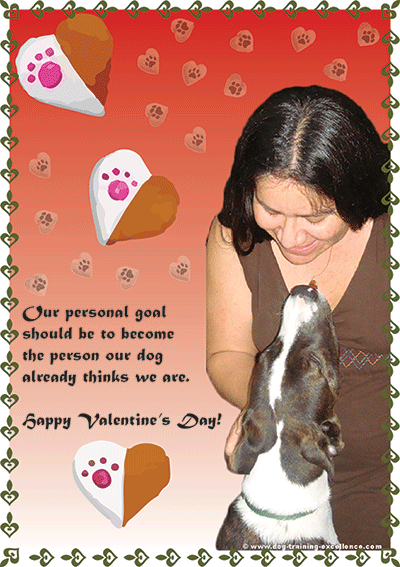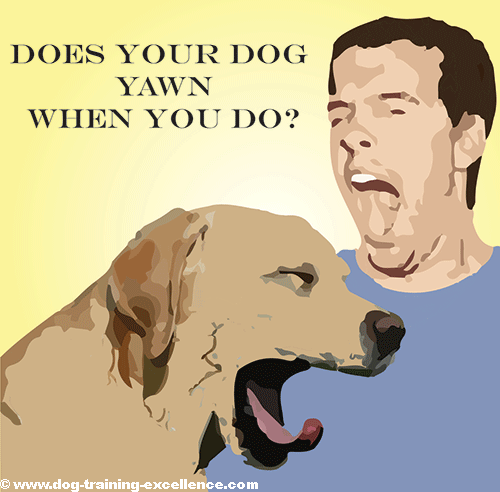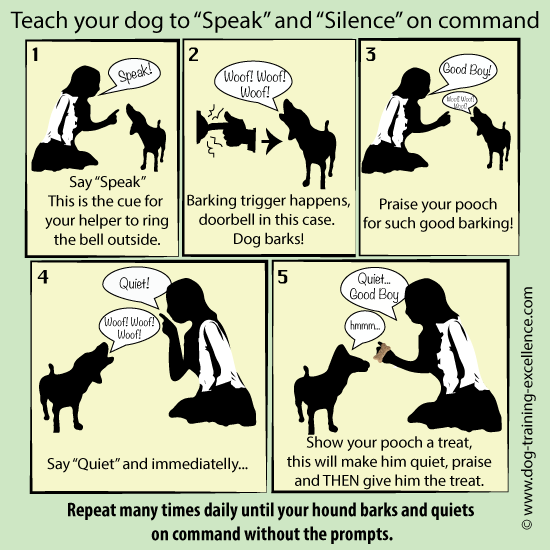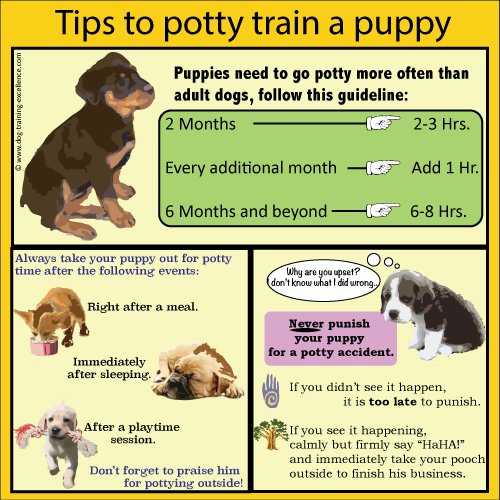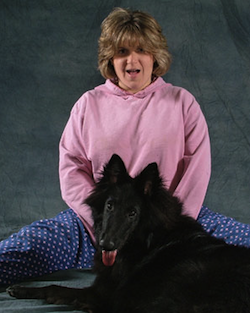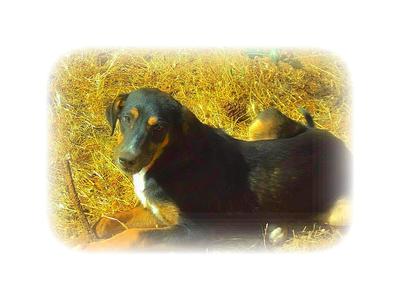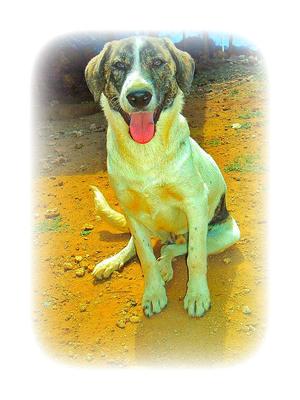| Back to Back Issues Page |
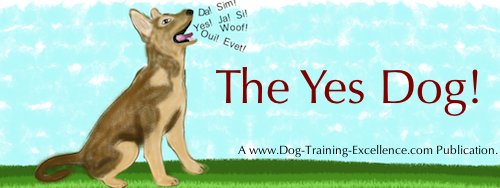 |
|
The Yes Dog!, Issue #004 -- Does your dog yawn when you do? February 10, 2014 |
Issue #004, February 15th 2014I am thrilled to share with you the good news! I have successfully defended my Ph.D. in Neuroscience at the end of last year! I am really excited about what is ahead, which includes a lot of dog training and hopefully some dog behavior research as well. In this issue I have lots of interesting things to share with you. Read on for some doggy fun facts, science and training. Feel free to drop me a line with questions, suggestions or even a theme you would like to see featured here. You can send me a quick
e-mail!
Happy Valentine's Day to Everyone! Are you planning to do something for your hound? maybe a special home-made treat or a fun day at the park? In this issue you will learn a little bit about the study of dog cognition. Recently, researchers have started to discover that pet dogs have amazing social and thinking abilities that are not found in most other animals. This is a very exciting time because science is catching up with what dog lovers all over the world already knew: dogs are amazing!
Table of Contents
The Science of Dog TrainingContagious Yawning in dogsA Review of Phillips Butter M. and Strasser R. Contagious yawning, social cognition, and arousal: an investigation of the processes underlying shelter dogs’ responses to human yawns. Animal Cognition, January 2014. Can dogs be susceptible to contagious yawning? And if they are, is this due to social/cognitive abilities, such as the understanding of human social cues, or because of physiological arousal that triggers this behavioral response? Why do we yawn anyway? Scientists are still debating the answer to that question, mostly because there is not a whole lot of research about it. Yawning can be triggered by sleepiness, contagious yawning (triggered by the sight or sound of someone else doing it), a stressful situation, nervousness and many other things. Some studies argue for a physiological role of yawning. For example, to increase arousal in situations in which being awake is important (i.e. in the presence of stressors or mild danger). However, there hasn’t been much scientific data supporting the idea that yawning has any arousing effects. The opposite might be true, though. Yawning might be a way to help us relax and get ready to sleep. In fact, dog trainers read dog yawning as a “calming signal”. This happens when dogs are mildly stressed and yawn to, both, calm themselves and signal to other hounds to calm down too. Interestingly, contagious yawning has been associated with empathy and social skills in humans. This means that, in general, people with better empathy and higher theory of mind skills are more likely to yawn in response to other people yawning than people that score lower in empathy tests. In addition, yawing develops in humans at the age at which empathy and theory of mind become more complex. Some scientists have proposed that yawning may have served the purpose of synchronizing tiredness and sleeping patterns among members of a gregarious animal group, but this has not been proven yet. What I think is really fascinating is that many non-human primates are also able to yawn at the sight of a human or other primate yawning. Most other animals have not been shown to respond to contagious yawning, except… Yes! Dogs! Although only some dogs seem to respond to contagious yawning and a study found that shelter dogs are more susceptible than human-bonded ones.
Why is it so amazing that dogs are able to respond to contagious yawning? Because it was previously thought that infectious yawning was only linked to animals that possessed complex cognitive abilities, in other words animals that have self-awareness and some degree of theory of mind (like humans and some non-human primates). Dogs are not considered to be in this category. Which means that, either complex cognitive abilities are not required for contagious yawning to develop, or the dog’s mind is more elaborate than what scientists previously thought. A caveat is that because dogs yawn when stressed (tension-yawn), it might be that they are not responding to the human yawn but instead feeling stressed, this could also explain why shelter dogs are more likely to respond to infectious yawning (they tend to be more stressed than family dogs. Researchers Phillips-Butter and Strasser designed an experiment to better understand why some dogs are susceptible to contagious yawning from humans and others are not. Is it that some dogs can understand human social cues very well and having a more complex cognitive brain allows them to respond to contagious yawning? Or are they stressed in the presence of a stranger and show a tension-yawn? To answer this questions, they tested 60 shelter dogs for contagious yawning. Sounds like fun! Sitting in front of a dog yawning for 5 min! And as a control they spent another five minutes making gaping mouth movements. Then, dogs were tested in a “social object-choice task”. In this task there are two food containers, one with food, the other one without. A person standing between them points or gazes at the bowl with food. Some dogs can read this as a clue and choose that bowl, while others ignore it and choose randomly. Finally, to test for arousal or stress, researchers took saliva samples to test the levels of cortisol, a hormone produced in response to stress. What did they find? A very low percentage of the dogs tested showed contagious yawns (20%). Interestingly, these dogs had higher levels of cortisol, indicating that they were more stressed than the dogs that did not respond to infectious yawning. The authors concluded that because both groups of dogs performed equally in the social object-choice task, the contagious yawn observed was more likely a tension-yawn. Does this mean dogs don’t have those higher social skills after all? Not necessarily, they proposed that human yawning in a stressful situation may be making the dogs more stressed, which means they do understand something about that human yawn. Maybe they understand it as the person conveying an emotion of stress and this may also require the dog’s ability to empathize with people. As with all scientific research, the answer leaves you with more questions! Future studies will be needed to differentiate between tension-yawns and contagious-yawns in dogs to better understand how each one of them is elicited and what do they produce. Still, I think the findings from this research paper are really good and we should pay more attention to our dogs yawning, specially in stressful situations. Is your dog susceptible to contagious yawning? Try it out at home! Here is what to do:
“Tell us about it!” I would love to hear if your dog yawns after you. Train your dog to...Speak and Quiet on Command!Training your dog to bark and shush on command can be very easy and useful too. Next time his nuisance barking is breaking your concentration, simply ask him to be quiet.
The idea, as the infographic above depicts, is to first praise your hound for barking (you will use something that triggers your hound to bark to speed up training), then ask your pet to quiet and reward his silence. The important training trick here is to praise for barking and give him a food reward for being quiet. This is because many times barking can be rewarding on its own, so, letting your dog bark is a reward. You want to praise it because you are trying to put the behavior on command.
Featured ArticleTips for Potty Training your Puppy - It can be done in as little as a week!One of the most challenging things to do when you get a puppy is house training. It can be hard because it does require a lot of your time and attention, but only for a short period until your puppy learns to pee outside!
Never use punishment when potty training your pooch. This is ineffective and cruel. The rule is to take your puppy for potty breaks very often. Some veterinarians recommend to keep the dog inside the house until all the vaccinations have been given. However, dog trainers disagree. It is true that your baby dog might catch something outside, but it is also true that if you wait too long to take your hound outside he will have potty training issues and the lack of socialization will result in a fearful and insecure adult dog. Simply be cautious and don't let your pup interact with stray dogs or eat poop when you take him out.
Learn here what to do to potty train your puppy in a week! Don't forget to share this article with new dog owners.Interviews with Pet ExpertsAli Brown, author and reactive dog expert.
Ali Brown has written several dog behavior and training books. She is a very well known dog trainer that leads very successful reactive dog seminars. Ali is a positive dog trainer and we were lucky to have her spend some time answering Dog Training Excellence questions. Sneak Peak:"Working with a reactive dog is frustrating, embarrassing, disheartening, and it’s a slow process. Learning does not happen in a linear manner, so there are ups and downs. It helps to know there are others out there with a dog like yours."
Get advice, tips and insight from this interview! You don't want to miss it. Your Questions and StoriesThis section is for you to brag about your dog! You can also ask questions (and get answers), tell us your advice or share an interesting anecdote. Your story could be featured in The Yes Dog! And will get its own webpage that you can share with friends and family. Click here to share! This issue's featured story is about Angel and Radja. A heartwarming story of two rescue dogs: an abandoned fight dog and a very sick hound found by the side of the road. The care Melody provided for them is inspiring.
Click here to add your comments to this story! That is all for now. Until the next time,
P.S: Would you like to have your own website? It is easier than you think. I had no knowledge about the web but here I am! You can have yours too... watch the Site Build It! Video Tour. 
Copyright © 2012-2014 Natalia Rozas de O'Laughlin. All Rights Reserved. Unauthorized duplication or publication of any materials prohibited. Not intended to substitute for veterinary, legal or other professional advice. Consult your vet for advice about medical or behavioral conditions & treatment of your pet. |
| Back to Back Issues Page |
